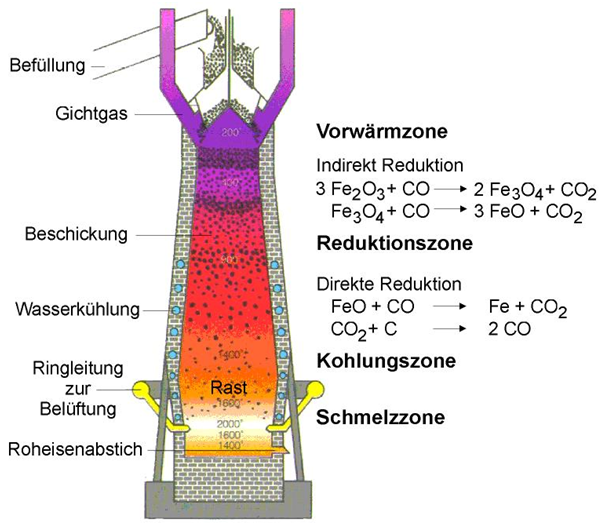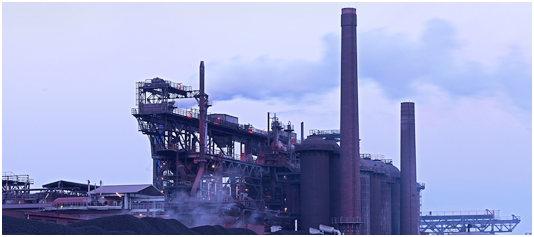Blast furnace
Shaft furnace for producing pig iron. This occurs through reducing oxidic iron ores with coke and aggregates.The blast furnace is automatically filled in batches from the top with iron ore (sinter), aggregates and coke. Depending on the furnace type, oxygenated hot air of about 1000 °C is blown in through 9 and/or 12 blow molds which causes coke to burn to CO before it reaches the blow molds.
Iron ores contained in the syphon (Fe2O3, Fe3O4,) are directly reduced in the blast furnace due to the developing CO (Equ. 1 and 2) and/or directly in steps through the carbon contained in the coke (Equ. 4 and 5). This way, at the end of the process liquid pig iron builds up with liquid slag at the open mold of the blast furnace.
Eq. 1
Eq. 2
FeO is reduced above te,peratures of 650 °C (Eq. 3)
Eq. 3
Direct reduction at temperatures of 1300 °C (Eq. 4 and 5)
Eq. 4
Eq. 5
Stack gas is used for mutually heating the blast heating (see Recuperator). Figure 1 schematically shows the design of a blast furnace machine, Fig. 2 and 3 illustrate execution examples.
Additional references:
Cupola furnace




